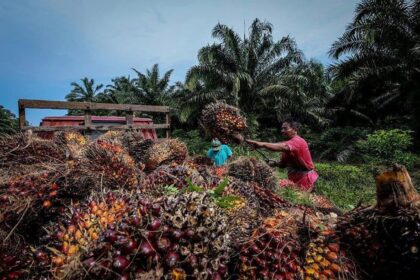Thailand’s Elephant Camps Face an Unprecedented Crisis
Thailand’s elephant camps, once bustling with tourists eager for up-close encounters with Asia’s largest land mammal, are now grappling with a perfect storm of challenges. The COVID-19 pandemic, economic downturn, natural disasters, and shifting tourist expectations have forced these iconic attractions—especially those in Chiang Mai province—to fundamentally rethink their business models. The survival of both elephants and the communities that care for them now hangs in the balance.
- Thailand’s Elephant Camps Face an Unprecedented Crisis
- From Entertainment to Education: A New Model Emerges
- Multiple Crises Compound the Challenge
- Survival Strategies: Innovation, Outreach, and Community Support
- The Rise of Regenerative and Ethical Tourism
- Ethical Dilemmas and the Quest for Standards
- The Bigger Picture: Conservation and the Future of Thailand’s Elephants
- In Summary
For decades, elephant tourism has been a cornerstone of Thailand’s travel industry, drawing millions of visitors annually. But as international arrivals plummeted and scrutiny of animal welfare intensified, camps have been compelled to adapt or risk closure. The story of their reinvention is one of resilience, innovation, and a growing movement toward ethical, regenerative tourism.
From Entertainment to Education: A New Model Emerges
Mae Taeng Elephant Park, one of Chiang Mai’s most established camps, exemplifies the industry’s struggle and transformation. Traditionally known for elephant rides and shows, Mae Taeng has expanded its educational arm, “Hug Elephant,” to offer immersive, hands-on learning experiences. Visitors don mahout (elephant handler) clothing and participate in activities such as preparing health supplements, making herbal soap, feeding, and bathing elephants. The program, priced at 1,650 baht, features elephants comfortable with human interaction, including Phu Pink—a young elephant celebrity with over 150,000 social media followers.
Thanabhumi Asoketrakoon, corporate communications manager at Mae Taeng, explains the shift:
“We’ve had to completely rethink our approach. The traditional model simply isn’t sustainable in the current climate. We focus on education rather than entertainment. Visitors dress as mahouts and learn about elephant behaviour, diet, and care practices.”
This pivot toward educational tourism is not unique to Mae Taeng. Across northern Thailand, camps are introducing similar programs, aiming to provide meaningful, ethical experiences that prioritize animal welfare and visitor learning over spectacle.
Multiple Crises Compound the Challenge
The pandemic’s impact on Thailand’s elephant camps has been profound. According to a 2022 study by the National Institutes of Health, the international travel ban and subsequent collapse of tourism forced many camps to close or drastically reduce operations. Staff layoffs became widespread, with the mahout-to-elephant ratio dropping from 1:1 to 1:2. Elephants’ daily routines changed dramatically: walking distances and work activities were reduced or halted, while chaining hours increased due to inactivity. Nutrition suffered as food supplies dwindled, and some elephants were returned to villages or sold.
Natural disasters have further exacerbated the situation. Flooding and earthquakes in 2023 reduced tourist arrivals by 50 percent. Seasonal variations also play a role, with September—dubbed the “month of hunger” by operators—being particularly challenging due to low visitor numbers and high operating costs. Annual haze pollution, though somewhat alleviated by early rains this year, remains a persistent issue.
Perhaps most daunting are the daily expenses. Each elephant requires about 500 baht worth of food daily, consuming up to 10 percent of their body weight in vegetation. For camps like Mae Taeng, which cares for 62 elephants, monthly food costs alone can reach 400,000 baht. These costs are fixed, regardless of how many tourists come through the gates.
Survival Strategies: Innovation, Outreach, and Community Support
To weather these challenges, elephant camps have adopted a multi-pronged survival strategy:
- Tourism Promotion: Camps are participating in Tourism Authority of Thailand events to revive key markets, especially China, which previously accounted for 70 percent of visitors.
- International Expansion: Establishing booths in nearly 10 countries—including Singapore, Malaysia, Taiwan, and the Philippines—to connect with tour agents and diversify their clientele.
- Local Partnerships: Collaborating with Chiang Mai’s tourism industry council and business associations for mutual support and resource sharing.
- Cultural Diplomacy: Hosting high-profile events, such as weddings for American couples on elephant-back, to generate international media coverage and showcase Thai culture.
Community impact is central to these efforts. Mae Taeng, for example, supports 300 employees, including restaurant staff and members of the Karen long-neck village community. The camp provides housing, utilities, and rice, ensuring that the livelihoods of local families are protected alongside the welfare of the elephants.
Before the pandemic, Mae Taeng welcomed up to 2,700 visitors daily during peak periods. Today, numbers have dropped to 200 on weekdays and 700–1,200 during high season. To attract more domestic tourists, camps are leveraging “elephant influencers” and offering special pricing for Thai visitors, though international guests still make up the majority.
The Rise of Regenerative and Ethical Tourism
Beyond survival, Thailand’s elephant camps are at the forefront of a global shift toward regenerative travel—a movement that goes beyond sustainability to actively restore ecosystems and support local communities. According to Booking.com’s 2024 Sustainable Travel Report, 71 percent of travelers now want to leave the places they visit better than they found them, up from 66 percent in 2023. This consumer-driven demand is reshaping the industry.
Regenerative tourism in the elephant sector means prioritizing animal welfare, conservation, and education over exploitative practices. Camps like Elephant Hills in Khao Sok and Pattaya Elephant Sanctuary have set new standards by offering chain-free, hook-free, and riding-free experiences. Elephants are allowed to roam freely, and visitor interactions are limited to observation, feeding, and learning about elephant behavior in a natural setting.
Hayley Lynagh, managing director of Global Spirit, an animal welfare auditing specialist, praised Elephant Hills’ approach:
“Elephant Hills meets core criteria, exceeds requirements on all relevant criteria, and demonstrates best practice in many areas of operation.”
Similarly, Elephant Jungle Sanctuary has focused on ethical tourism and conservation, providing safe environments for elephants and supporting local communities through job creation and wildlife preservation initiatives. Visitors participate in feeding and bathing activities, but the emphasis is on learning and respect for the animals’ natural behaviors.
Ethical Dilemmas and the Quest for Standards
The transformation of Thailand’s elephant tourism industry has not been without controversy. The term “sanctuary” is often used loosely, with no agreed-upon standards or regulations. Some venues continue to allow direct contact, breed elephants in captivity without plans for rewilding, or supply young elephants to exploitative industries. The Thailand Tourism Authority acknowledges this ambiguity, noting that anyone can register a “sanctuary” business name without meeting animal welfare criteria.
Wildlife NGOs, such as World Animal Protection, have long advocated for stricter standards. They urge travelers to avoid venues offering elephant rides or performances and to support only those that prioritize observation and conservation. Brian Young, managing director for EMEA at G Adventures, emphasizes the importance of responsible travel choices:
“We were one of the first operators to recognize that elephant riding is wrong and that they can’t be ‘tamed’ without cruel treatment. We signed the World Animal Protection Elephant Friendly Pledge committing not to sell or promote attractions that offer elephant entertainment. We now educate our travelers on why they shouldn’t ride them or visit businesses that offer this activity.”
Travelers are encouraged to research sanctuaries thoroughly, check independent reviews, and seek transparency from operators regarding their animal welfare policies. The goal is to ensure that tourism dollars support genuine conservation efforts rather than perpetuating harmful practices.
The Bigger Picture: Conservation and the Future of Thailand’s Elephants
Thailand is home to approximately 15 percent of the world’s remaining wild Asian elephants, with between 3,100 and 3,600 living across 69 protected areas. However, wild elephants are now outnumbered by those in captivity—around 2,800 elephants live in tourism venues nationwide, and nearly 75 percent of captive elephants in Asia are used for tourist entertainment.
This stark reality underscores the importance of regenerative travel and ethical tourism. By supporting camps that prioritize welfare, conservation, and education, tourists can help shift the industry toward a more sustainable and humane future. The hope is that, as the industry recovers from the pandemic, these new models will set higher standards and inspire broader change across Southeast Asia and beyond.
In Summary
- Thailand’s elephant camps have been severely impacted by the pandemic, economic downturn, and natural disasters, forcing them to reinvent their business models.
- Many camps are shifting from entertainment-focused activities to educational and ethical tourism, emphasizing animal welfare and visitor learning.
- Operating costs remain high, with food and care for elephants representing significant financial burdens regardless of tourist numbers.
- Regenerative tourism is on the rise, with travelers seeking experiences that actively benefit wildlife and local communities.
- The lack of clear standards for “sanctuaries” remains a challenge, but NGOs and responsible operators are pushing for greater transparency and animal welfare.
- Tourists play a crucial role in shaping the future of elephant tourism by making informed, ethical choices.
- The survival of Thailand’s elephant camps—and the welfare of thousands of elephants—depends on continued innovation, community support, and a commitment to ethical, sustainable practices.












